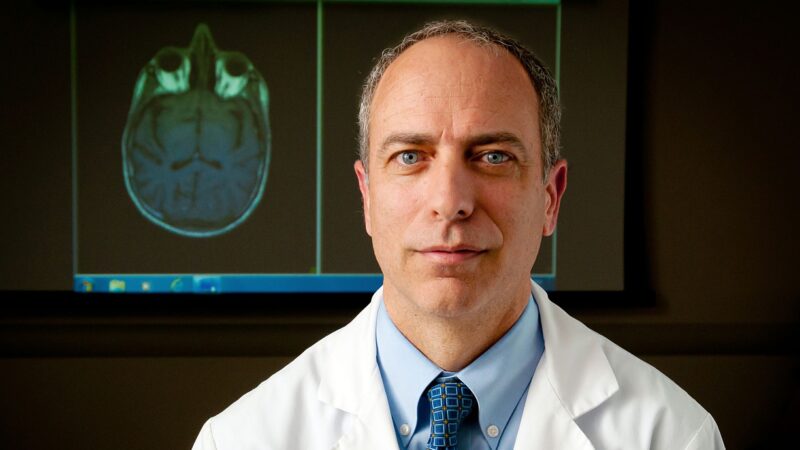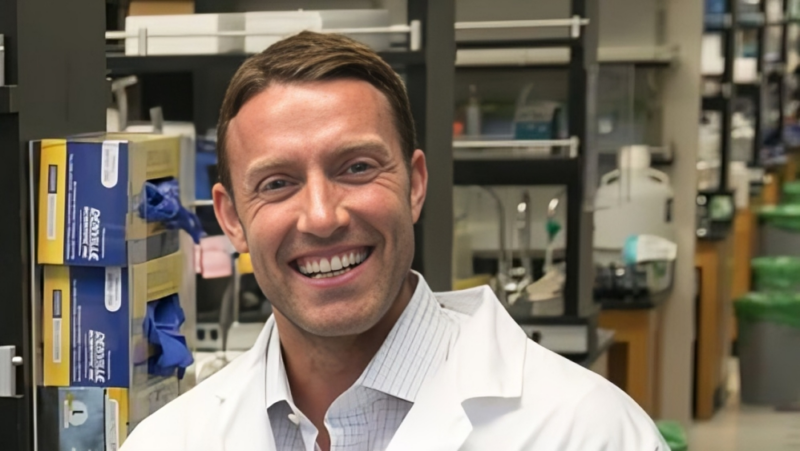
UCLA study uncovers how aggressive brain tumor evades treatment and highlights a promising new strategy
A new precision medicine approach that combines genetic and functional profiling helps predict how glioblastoma will respond to therapy
A new study from scientists at the UCLA Health Jonsson Comprehensive Cancer Center helps explain why glioblastoma, one of the most aggressive forms of brain cancer, becomes resistant to treatment and introduces a new approach that paves the way for more personalized treatment strategies for patients with this deadly brain tumor.
The approach, described in Nature Communications, combines genetic profiling, which analyzes the genetic makeup of a tumor, with functional profiling, which observes how cancer cells behave in response to treatments. This combined strategy helps predict how well glioblastoma will respond to treatments and identifies new ways to target and treat the tumors more effectively.
“Many cancer treatments are based on the genetic profile of a patient’s tumor. However, genomic features alone can’t always predict how a tumor will respond to a therapy.
This study explores a new approach that looks beyond the tumor’s genetic blueprint, in which we combine genetic data with functional tests to show how live cancer cells respond to treatments. This gives us a much clearer picture of what treatments will work and why,” – said Dr. David Nathanson, senior author of the study and a professor of molecular and medical pharmacology at the David Geffen School of Medicine at UCLA.
Glioblastoma is notoriously difficult to treat due to its ability to resist cell death, a process known as apoptosis, and its rapid adaptation to therapies. While traditional genomic precision medicine uses DNA sequencing to identify genetic mutations in tumors and match them with targeted therapies, this approach provides only a snapshot of the tumor’s potential response. It often falls short in predicting treatment success because it doesn’t account for the genetic complexity of brain tumors or the dynamic behavior of cancer cells.
To overcome to this challenge, Nathanson and his team looked at integrating functional profiling alongside genomic data to examine glioblastoma’s resistance to apoptosis. To do this, the team used a special technique called BH3 profiling to understand how this system works in tumor samples from patients. By using this method, scientists can measure the cancer cells’ responses to treatments that aim to trigger cell death in real time.
Through this analysis, the team found that standard therapies like radiation or chemotherapy can change how the tumor’s self-destruct machinery works, but this effect depends on specific genetic features, such as a functional p53 gene.
Using insights from this test, the researchers then created a machine-learning tool called GAVA. This tool combines genetic and functional data to help predict how a glioblastoma tumor might respond to a specific treatment combination.
In preclinical models, GAVA helped predict which tumors would respond best to a combination of standard cancer treatments and drugs that block certain proteins. They found that targeting the protein BCL-XL, which plays a major role in helping cancer cells avoid death, could enhance the effectiveness of treatments in certain cases.
The researchers then tested a new experimental drug called ABBV-155, an antibody-drug conjugate that is designed to target BCL-XL in tumors while sparing healthy cells.
“We found that combining standard therapies with ABBV-155 successfully induced tumor shrinkage, which is something we rarely observe in clinically relevant glioblastoma models.
The results are incredibly exciting and we are hopeful that this approach will pave the way for a new therapy for patients with this devastating disease,” – said Nathanson, who is also an investigator in the UCLA Health Jonsson Comprehensive Cancer Center.
“The findings provide a clear path toward developing targeted, patient-specific therapies that could significantly improve outcomes for patients diagnosed with glioblastoma,” said Dr. Timothy Cloughesy, distinguished professor of neuro-oncology at the David Geffen School of Medicine at UCLA and a study co-author.

The researchers are now working to test the combination in a clinical trial to evaluate its impact on patients.
The study’s first author is Elizabeth Fernandez, a PhD Candidate in the department of Molecular and Medical Pharmacology at UCLA. Other UCLA authors are Wilson Mai, Kai Song, Nicholas Bayley, Jiyoon Kim, Henan Zhu, Marissa Pioso, Pauline Young, Cassidy Andrasz, Dimitri Cadet, Linda Liau, Gang Li, William Yong, Fausto Rodriguez, Jingyi Jessica Li and Thomas Graeber.
The study was funded in part by the Sheila and Stanford L. Kurland Family Foundation, the National Brain Tumor Society, Uncle Kory Foundation, Ziering Family Foundation, The Bloomfield Foundation and grants from the National Institutes of Health.
Other posts featuring UCLA Health.
-
Challenging the Status Quo in Colorectal Cancer 2024
December 6-8, 2024
-
ESMO 2024 Congress
September 13-17, 2024
-
ASCO Annual Meeting
May 30 - June 4, 2024
-
Yvonne Award 2024
May 31, 2024
-
OncoThon 2024, Online
Feb. 15, 2024
-
Global Summit on War & Cancer 2023, Online
Dec. 14-16, 2023

